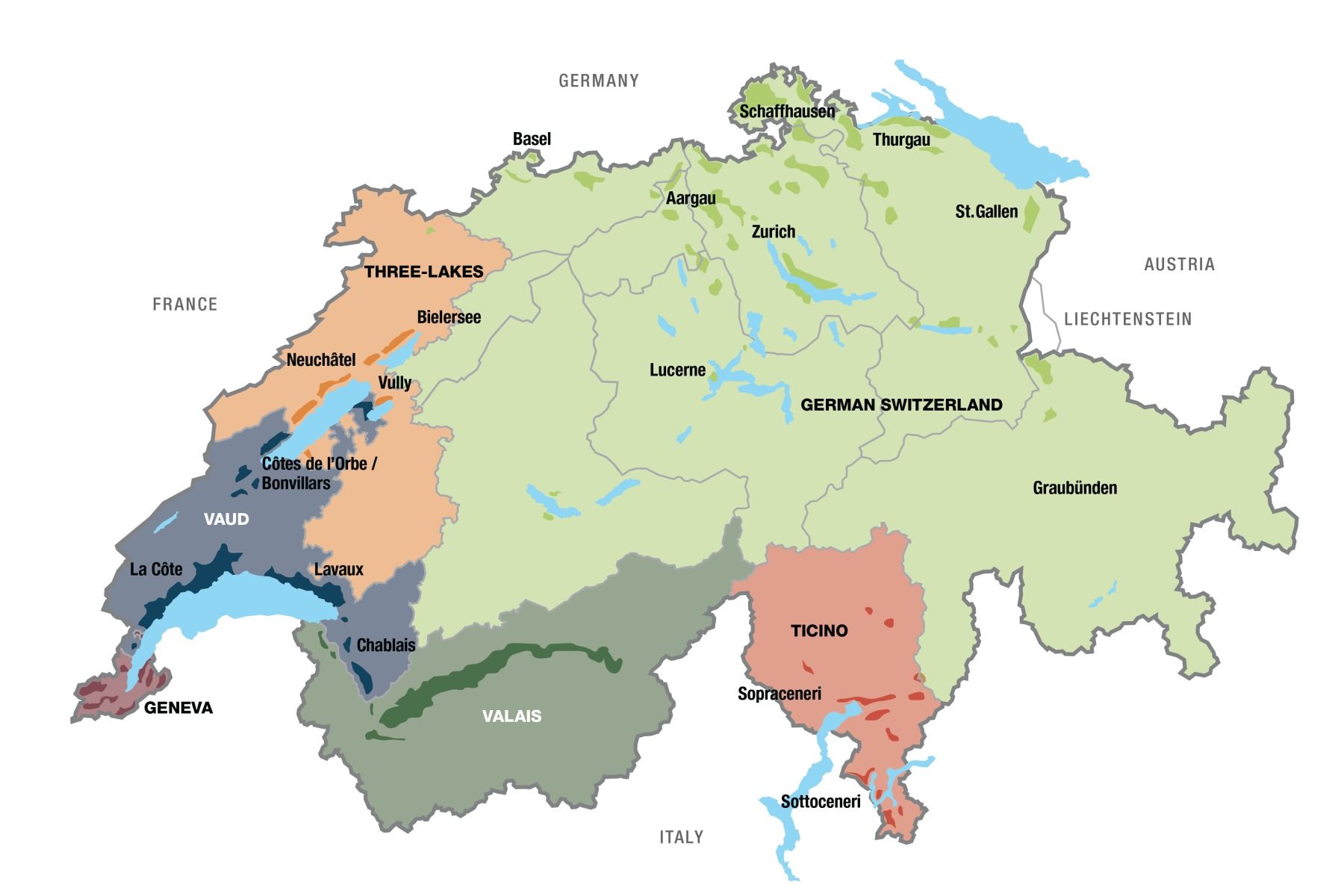Switzerland – a paradise for wine-lovers
Intro
The variety of languages, landscapes and customs lend our little country in the heart of Europe a particular charm. When it comes to its winegrowing heritage, Switzerland is equally complex and unique.
Wine regions
Switzerland’s winegrowing industry is divided between six regions. Each of these has its own distinctive character. Discover their special qualities.

German-speaking Switzerland
The wine region of German-speaking Switzerland comprises 17 cantons that can be split into three areas: Basel and Aargau, Zurich, Thurgau and Schaffhausen as well as Graubünden and St. Gallen.
Learn moreThe Three-Lakes region
The vineyards of the Three Lakes region lie on the Lakes Biel, Murten and Neuchâtel, and stretch out over the cantons of Neuchâtel, Bern, Fribourg, Vaud and Jura.
Learn moreGeneva
Millennia-old, Chasselas is the most important grape originating in the Lake Geneva Region and makes up 25% of the total vineyard area in Switzerland.
Learn moreTicino
The vineyards of Ticino benefit from the nearby Mediterranean climate with many hours of sunshine and high average temperatures, which sets them apart from other winegrowing areas in Switzerland.
Learn moreVaud
The canton of Vaud is the second-largest winegrowing region in Switzerland. It is above all known for its fruity-fresh white wines of the Chasselas grape variety.
Learn moreValais
Around one third of Swiss wine is produced by the vineyards of the Valais. The vineyards extend over 100km along the Rhône at between 270m and 1,100m above sea level.
Learn moreRed or white? Top ten varieties
The country of Switzerland boasts an enormous variety of different terroirs. With over 252 types of grape being cultivated, this gives it a unique character that is beyond compare. The following chart shows the ten most commonly grown grape varieties.
Who produces the most? Comparison of the wine regions
All six wine regions contribute to the diversity of the Swiss wine landscape. In terms of quantity, the largest contributor to wine production is the Valais at one third, followed by the canton of Vaud and German-speaking Switzerland. The smallest quantity comes from the Three Lakes region.
Did you know…? Facts and figures
Production: 99 million litres per year
No fewer than 99 million litres of Swiss wine were produced in 2022.
Consumption: 36 bottles of wine per capita
Per capita, the Swiss drink 36 750ml bottles of wine each year (2022). Of these, 13 bottles come from Switzerland itself.
Export: 1%
Swiss wine is a rarity. Only about 1% is exported. That’s because the Swiss prefer to keep their wine to drink themselves. Domestic demand is so high that very little remains for export.
Conclusion: a trip to Switzerland is (almost) essential if you wish to discover Swiss wines.
Producers: 1,500
Spread over Switzerland’s six wine regions, around 1,500 winegrowers produce their own wines.
The smallest vineyard in the world
Saillon – the smallest vineyard in the world – comprises just three vines. It is located in Valais, measures 1.6 square metres and has been owned by the Dalai Lama since 1999.
Europe’s highest vineyard
Below the village of Visperterminen lies Europe’s highest vineyard at an elevation of between 650m and 1,150m above sea level.
26 cantons
Wine is cultivated in all of Switzerland’s 26 cantons.
Dating back to Roman times
Grapes have been cultivated for winemaking in Switzerland since the days of the Roman Empire.